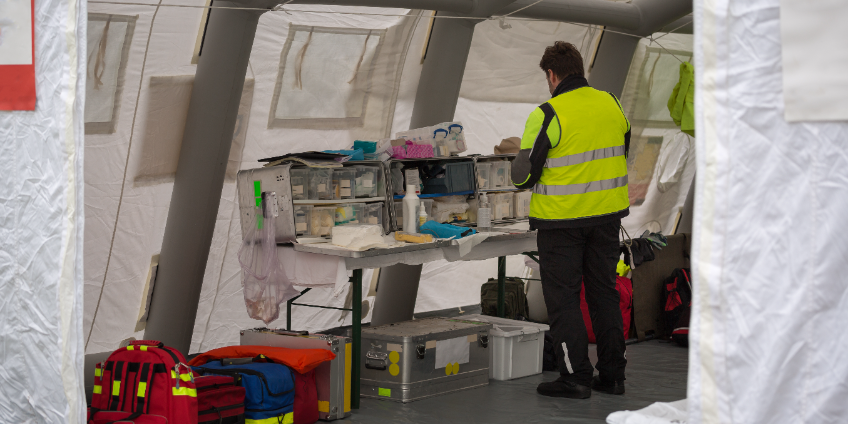
September is National Preparedness Month, a time to remember and spread awareness about the need for robust preparation in the event of a disaster or emergency. This applies to all, from families to businesses — and of course, health care organizations and providers.
Frequently, these incidents result in mass casualties, such as in the event of a natural or man-made disaster or a shooting. A Mass Casualty Incident (MCI) is defined as one that generates a sufficiently large number of casualties whereby the available health care resources, or their management systems, are severely challenged or unable to meet the health care needs of the affected population.
There is debate over the specifics on what qualifies as “mass casualties,” with the severity of the victims’ injuries playing a role alongside the scale of the incident, but importantly, one must consider how the event stresses the ability of a health care provider to respond and treat victims in an adequate and timely fashion.
Therefore, the role of first responders in triaging and stabilizing patients in MCIs is crucial. An effective EMS response will help successive providers deliver their own treatment and ongoing care.
In recognition of National Preparedness Month, we’re offering some tips for EMS crews preparing for MCIs.
Training
The foundation for success is laid in the downtime between shifts by training new personnel on proper techniques, as well as maintaining and updating current team members’ skills and knowledge. Training for an MCI can be more specialized, but teams develop skills in many ways, from structured courses to practice scenarios, veteran guidance and more.
Continuing education units (CEUs) are not only required by most regulatory agencies, but they also provide some of the best methods to prepare an EMS team for dealing with MCIs. There are many courses and exercises centered on specific scenarios, such as mass shootings or mass fentanyl poisonings. Organizations that offer CEUs can be found easily, and notable groups include the Journal of Emergency Medical Services (JEMS) and EMS1 Academy, but before taking any course, be sure the program meets state licensing board requirements.
Equipment
Obviously, ambulances must be equipped with a wide range of effective devices to appropriately answer an emergency call, regardless of if it’s an MCI. These include staples such as ventilators and defibrillators. However, services also must focus on investing in or utilizing equipment that can be used in formal and personalized practice sessions alike.
Examples include:
- “Airway Larry” Airway Management Trainer Head: This is a realistic simulator for intubation, suctioning and other airway management skills. It is anatomically correct in size and detail, allowing paramedics to easily practice techniques.
- Portable suction pumps: These tools may be neglected when training on a range of cardiac arrest scenarios, but they are vital during a real-life cardiac emergency. They assist your team in clearing the airway of blood, mucus and vomit, visualizing cords during intubation and removing traumatic debris.
Stocking and maintenance
Following a busy shift, it is not uncommon for an ambulance to appear relatively depleted — and maybe a little messy. That means effective processes for restocking, cleaning and maintenance are key components for readiness. In the event of an MCI, a fully stocked and sanitized vehicle is a must.
These are a few tips for how to meet that goal:
- Make a list: A checklist can be an effective way to organize what must be fully stocked in an ambulance and trauma kits. Focus on assessment tools, disposable items, trauma dressings, personal protection equipment and emergency medications, for starters. Additionally, take note of the number of supplies on board and in storage.
- Sanitize: Not only must the ambulance’s interior being cleaned and sanitized of potentially harmful fluids, debris, tissues and pathogens, but pay attention to larger equipment, as well, such as suctioning units, EKGs, defibrillators, etc.
- Charge and replace batteries: Perform a power check on battery-powered devices. Ensure chargeable batteries are full, replace the batteries on devices that use disposables and appear not to be fully functioning, and have an adequate number of replacement batteries on board.
Always be ready
The Boy Scouts are certainly on to something with their “Be Prepared” motto. Indeed, the saying is relevant to any health care organization — and doubly so for MCIs. When there is a significant number of casualties, multiple emergency procedures may be required, including cardiac treatment and airway management, so EMS teams always must be preparing with the proper training, equipment and maintenance processes.













